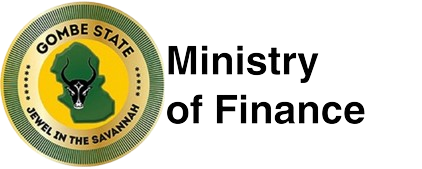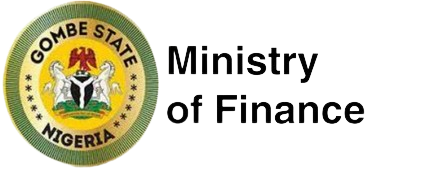[vc_section css=”.vc_custom_1617193318406{background-color: #ffffff !important;background-position: center !important;background-repeat: no-repeat !important;background-size: cover !important;}”][vc_row][vc_column][vc_custom_heading text=”Arrears Clearance Framework 2020″ use_theme_fonts=”yes”][vc_column_text]The introduction of the Arrears Clearance Framework comprised of the coverage and scope of the framework, purpose of the framework document, users of the framework document, and presentation of the State’s domestic expenditure arrears and description of the State’s policy on arrears.[/vc_column_text][/vc_column][/vc_row][vc_row][vc_column width=”2/3″][info_banner_vc google_fonts=”font_family:Abril%20Fatface%3Aregular|font_style:400%20regular%3A400%3Anormal” image_id=”1250″ pic_size=”100%” pic_height=”250″][/info_banner_vc][/vc_column][vc_column width=”1/3″ el_id=”bt1-n–pdf” el_class=”btn1-pdf”][ult_buttons btn_title=”Gombe State ACF 2020″ btn_link=”url:https%3A%2F%2Fstaging.mof.gm.gov.ng%2Fwp-content%2Fuploads%2F2021%2F03%2FGOMBE-STATE-ACF-2020.pdf” btn_align=”ubtn-right” btn_size=”ubtn-small” btn_title_color=”#ffffff” btn_bg_color=”#274472″ icon_size=”32″ btn_icon_pos=”ubtn-sep-icon-at-left” btn_font_style=”font-weight:bold;”][ult_buttons btn_title=”Gombe State ACF Template” btn_link=”url:https%3A%2F%2Fstaging.mof.gm.gov.ng%2Fwp-content%2Fuploads%2F2021%2F04%2FGOMBE-STATE-ACF-Template.xlsx” btn_align=”ubtn-right” btn_size=”ubtn-small” btn_title_color=”#ffffff” btn_bg_color=”#274472″ icon_size=”32″ btn_icon_pos=”ubtn-sep-icon-at-left” btn_font_style=”font-weight:bold;”][ult_buttons btn_title=”Gombe State SARVC 2020″ btn_link=”url:https%3A%2F%2Fstaging.mof.gm.gov.ng%2Fwp-content%2Fuploads%2F2021%2F04%2FGOMBE-STATE-SARVC-2020.pdf” btn_align=”ubtn-right” btn_size=”ubtn-small” btn_title_color=”#ffffff” btn_bg_color=”#274472″ icon_size=”32″ btn_icon_pos=”ubtn-sep-icon-at-left” btn_font_style=”font-weight:bold;”][ult_buttons btn_title=”Gombe State SIDA 2020″ btn_link=”url:https%3A%2F%2Fstaging.mof.gm.gov.ng%2Fwp-content%2Fuploads%2F2021%2F04%2FGOMBE-STATE-SIDA-2020.pdf” btn_align=”ubtn-right” btn_size=”ubtn-small” btn_title_color=”#ffffff” btn_bg_color=”#274472″ icon_size=”32″ btn_icon_pos=”ubtn-sep-icon-at-left” btn_font_style=”font-weight:bold;”][ult_buttons btn_title=”Gombe State ToR 2020″ btn_link=”url:https%3A%2F%2Fstaging.mof.gm.gov.ng%2Fwp-content%2Fuploads%2F2021%2F04%2FGOMBE-STATE-ToR-2020.pdf” btn_align=”ubtn-right” btn_size=”ubtn-small” btn_title_color=”#ffffff” btn_bg_color=”#274472″ icon_size=”32″ btn_icon_pos=”ubtn-sep-icon-at-left” btn_font_style=”font-weight:bold;”][/vc_column][/vc_row][vc_row][vc_column][vc_custom_heading text=”Gombe Debt Sustainability Analysis” use_theme_fonts=”yes”][vc_column_text]The State shows a medium debt position that appears sustainable in the long term. The medium debt position results from the State’s average performance in terms of mobilizing IGR underpinned by the successful tax administration reforms introduced recently in May 2020. The State controls its recurrent expenditure growth and reduces the level of its public debt due to the collapse of oil prices, COVID-19 pandemic and exchange rate fluctuations.[/vc_column_text][/vc_column][/vc_row][vc_row][vc_column width=”2/3″][info_banner_vc google_fonts=”font_family:Abril%20Fatface%3Aregular|font_style:400%20regular%3A400%3Anormal” image_id=”1185″ pic_size=”100%” pic_height=”250″][/info_banner_vc][/vc_column][vc_column width=”1/3″ el_class=”btn1-pdf”][ult_buttons btn_title=”Gombe State DSA Report” btn_link=”url:https%3A%2F%2Fstaging.mof.gm.gov.ng%2Fwp-content%2Fuploads%2F2021%2F04%2FGOMBE-STATE-DSA-REPORT-2020.pdf” btn_align=”ubtn-right” btn_size=”ubtn-small” btn_title_color=”#ffffff” btn_bg_color=”#274472″ icon_size=”32″ btn_icon_pos=”ubtn-sep-icon-at-left” btn_font_style=”font-weight:bold;”][ult_buttons btn_title=”Gombe State DSA Templete” btn_link=”url:https%3A%2F%2Fstaging.mof.gm.gov.ng%2Fwp-content%2Fuploads%2F2021%2F04%2FGOMBE-State-DSA-Templete-2020.xlsx” btn_align=”ubtn-right” btn_size=”ubtn-small” btn_title_color=”#ffffff” btn_bg_color=”#274472″ icon_size=”32″ btn_icon_pos=”ubtn-sep-icon-at-left” btn_font_style=”font-weight:bold;”][ult_buttons btn_title=”Gombe State MTEF-FSP 2021-2023″ btn_link=”url:https%3A%2F%2Fstaging.mof.gm.gov.ng%2Fwp-content%2Fuploads%2F2021%2F04%2FGombe-State-MTEF-FSP-2021-2023.pdf” btn_align=”ubtn-right” btn_size=”ubtn-small” btn_title_color=”#ffffff” btn_bg_color=”#274472″ icon_size=”32″ btn_icon_pos=”ubtn-sep-icon-at-left” btn_font_style=”font-weight:bold;”][/vc_column][/vc_row][vc_row][vc_column][vc_column_text]The state Government had Verified that is owing the underlisted Contractors. However, any Contractor that his name did not appear on the List via the link below, Should contact the Debt Management office, Ministry of finance Gombe. you can contact us via email: dmogombe@mof.gm.gov.ng.[/vc_column_text][/vc_column][/vc_row][vc_row][vc_column width=”1/4″][ult_buttons btn_title=”Database Of Contractors With Arrears” btn_link=”url:https%3A%2F%2Fpneumasofterp.azurewebsites.net%2FACF%2FACFIndex” btn_size=”ubtn-small” btn_title_color=”#ffffff” btn_bg_color=”#274472″ icon_size=”32″ btn_icon_pos=”ubtn-sep-icon-at-left” btn_font_style=”font-weight:bold;”][ult_buttons btn_title=”2019 ACF DMO Gombe” btn_link=”url:https%3A%2F%2Fstaging.mof.gm.gov.ng%2Fwp-content%2Fuploads%2F2021%2F04%2FACF-DMO-Gombe-ver-1.0.pdf” btn_size=”ubtn-small” btn_title_color=”#ffffff” btn_bg_color=”#274472″ icon_size=”32″ btn_icon_pos=”ubtn-sep-icon-at-left” btn_font_style=”font-weight:bold;”][ult_buttons btn_title=”Database Of Contractors With Arrears” btn_link=”url:https%3A%2F%2Fpneumasofterp.azurewebsites.net%2FACF%2FACFIndex” btn_size=”ubtn-small” btn_title_color=”#ffffff” btn_bg_color=”#274472″ icon_size=”32″ btn_icon_pos=”ubtn-sep-icon-at-left” btn_font_style=”font-weight:bold;”][ult_buttons btn_title=”Database of Gratuity Arrears” btn_link=”url:https%3A%2F%2Fpneumasofterp.azurewebsites.net%2FACF%2FPensionIndex” btn_size=”ubtn-small” btn_title_color=”#ffffff” btn_bg_color=”#274472″ icon_size=”32″ btn_icon_pos=”ubtn-sep-icon-at-left” btn_font_style=”font-weight:bold;”][/vc_column][vc_column width=”3/4″ el_class=”btn1-pdf”][info_banner_vc google_fonts=”font_family:Abril%20Fatface%3Aregular|font_style:400%20regular%3A400%3Anormal” image_id=”1033″ pic_size=”100%” pic_height=”250″][/info_banner_vc][/vc_column][/vc_row][vc_row][vc_column][vc_separator][/vc_column][/vc_row][vc_row][vc_column][vc_custom_heading text=”Secure User Login to DMO Portal” use_theme_fonts=”yes”][vc_row_inner][vc_column_inner width=”1/4″][ult_buttons btn_title=”Click to Log in to DMO Portal” btn_link=”url:https%3A%2F%2Fwww.mofgombe.org%2F” btn_size=”ubtn-small” btn_title_color=”#ffffff” btn_bg_color=”#274472″ icon_size=”32″ btn_icon_pos=”ubtn-sep-icon-at-left” btn_font_style=”font-weight:bold;”][/vc_column_inner][vc_column_inner width=”3/4″][/vc_column_inner][/vc_row_inner][/vc_column][/vc_row][vc_row][vc_column][vc_column_text]
Global Credit Rating (GCR)
Global Credit Ratings has accorded the above credit ratings to Gombe State Government of Nigeria (“Gombe State”) based on the following key criteria:
Although, a number of economic policies have been implemented to drive rapid industrialisation and diversify revenue streams, these programmes have yielded few tangible benefits, with revenue growth remaining weak, registering around the N50bn mark in the last seven years. This has been exacerbated by the significant dependence on oil price linked allocations from the Federal Government of Nigeria (“FGN”). While this source plays an important role in the funding structure, the unpredictability of earnings hampers financial planning, while also exposing a substantial funding gap, as has played out in the last few years.
The current expense base appears manageable (as recurring revenue was sufficient to cover costs). Nevertheless, higher staff costs and overheads saw the expense ratio expand to 69%, partly constraining the operating surplus in FY17. Nevertheless, a combination of robust income growth and cost rationalisation measures should drive growth in surpluses over the medium term, which will free up cash for capex developments. Read more from GCR website[/vc_column_text][/vc_column][/vc_row][/vc_section]

